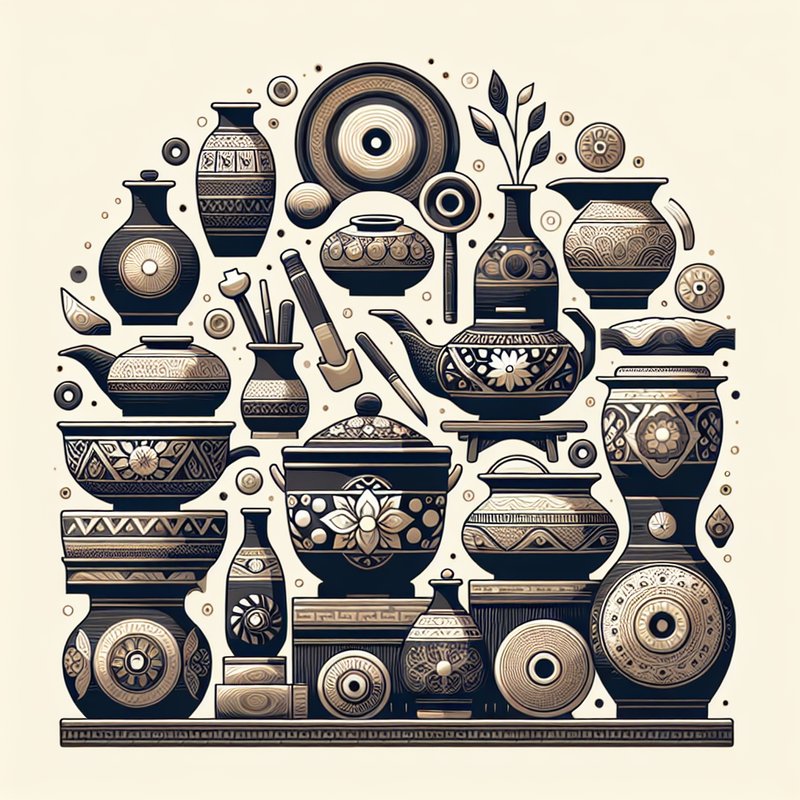The History of Pottery in Vietnam

The history of Vietnamese pottery dates back thousands of years, playing a crucial role in the daily life and culture of its people. The Red River Delta region, particularly Bat Trang, is one of the oldest pottery-making centers in the country. Archaeological finds reveal that Vietnamese pottery has been influenced by Chinese ceramics but still maintains unique characteristics that set it apart.
Throughout history, Vietnamese pottery has been used in various aspects of life, from domestic ware to religious objects. The diverse range of styles reflects the cultural exchanges through trade and political influences. Each period in history, from the Dong Son culture to modern times, contributes a unique chapter to the story of Vietnamese pottery.
Traditional Pottery Techniques in Vietnam

Vietnamese pottery is renowned for its distinctive techniques, often passed down through generations. One of the most famous is the hand-coiling method, which showcases the artisan’s skill in crafting delicate and intricate designs without the need for a potter’s wheel. Additionally, the slow-firing process in wood-fired kilns is a traditional method that imparts unique textures and colors to the finished products.
The glazing process in Vietnamese pottery is an art in itself, with various natural pigments used to create vivid colors. Artisans carefully apply these glazes to achieve a desired aesthetic, often inspired by nature or cultural motifs. This meticulous attention to detail is what makes Vietnamese pottery stand out, appealing to both locals and tourists alike.
Another notable technique is the incorporation of ‘sgraffito,’ in which designs are etched into the clay surface before firing. This technique allows for creative expression, giving each piece a distinctive look that highlights Vietnam’s artistic heritage.
Cultural Significance of Pottery in Vietnam

Pottery holds a special place in Vietnamese culture, often serving as a reflection of the country’s social and spiritual beliefs. Traditionally, pottery items were used in rituals and ceremonies, serving as vessels for offerings and decorative purposes in temples. The motifs and symbols found on pottery often contain deep cultural meanings, representing everything from prosperity to protection.
Each region in Vietnam boasts its distinctive pottery style, contributing to a diverse pottery landscape. From the minimalist designs of Phu Lang to the vibrant patterns of Chi Lang, Vietnamese pottery showcases the varied cultural heritage across the nation. Tourists visiting pottery villages are likely to witness these unique styles, offering insight into regional identity and artistry.
Participating in pottery workshops is a popular activity among tourists, allowing them a hands-on experience while learning about this ancient craft. By engaging with local artisans, visitors gain a deeper appreciation of the skill and dedication involved in preserving Vietnamese pottery tradition.
The Role of Pottery in Modern Vietnam

While traditional pottery craftsmanship continues to thrive, modern innovations have also found a place in the Vietnamese pottery market. Artisans today are experimenting with new materials, techniques, and designs while maintaining the essence of traditional craftsmanship. This fusion of old and new attracts a younger generation of artists and clients, revitalizing the industry.
Vietnamese pottery has become an integral part of contemporary interior design, sought after for its aesthetic appeal and originality. From rustic homes to modern spaces, both locals and international clients find Vietnamese pottery pieces an ideal addition to their decor. The growing export market further highlights the global appreciation and demand for these handcrafted items.
Efforts to promote and preserve Vietnamese pottery are evident in various governmental and non-governmental initiatives. By supporting pottery villages and artisans, Vietnam aims to sustain this cultural heritage, ensuring that future generations continue to explore and cherish the art of pottery-making.

Leave a Reply